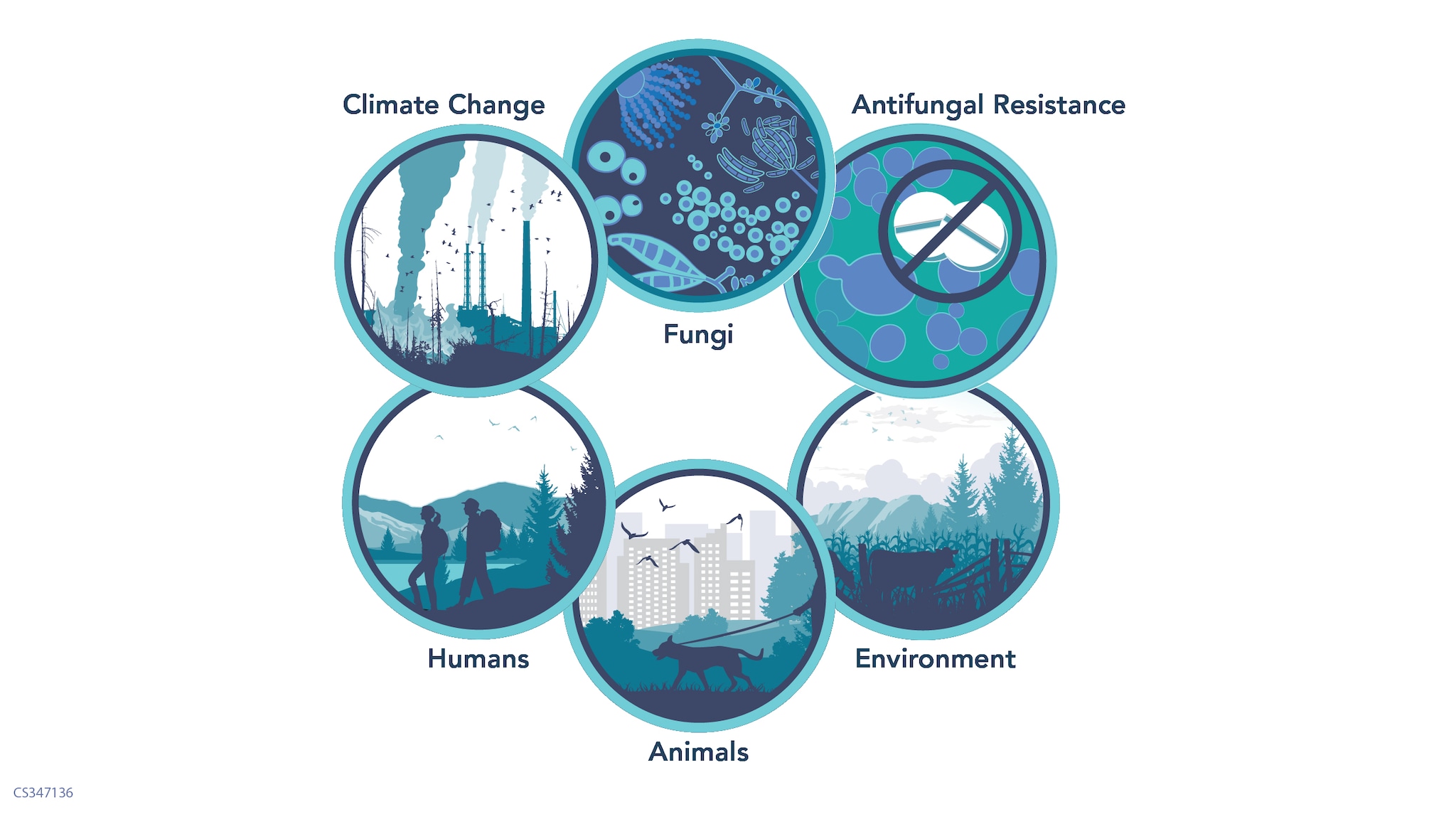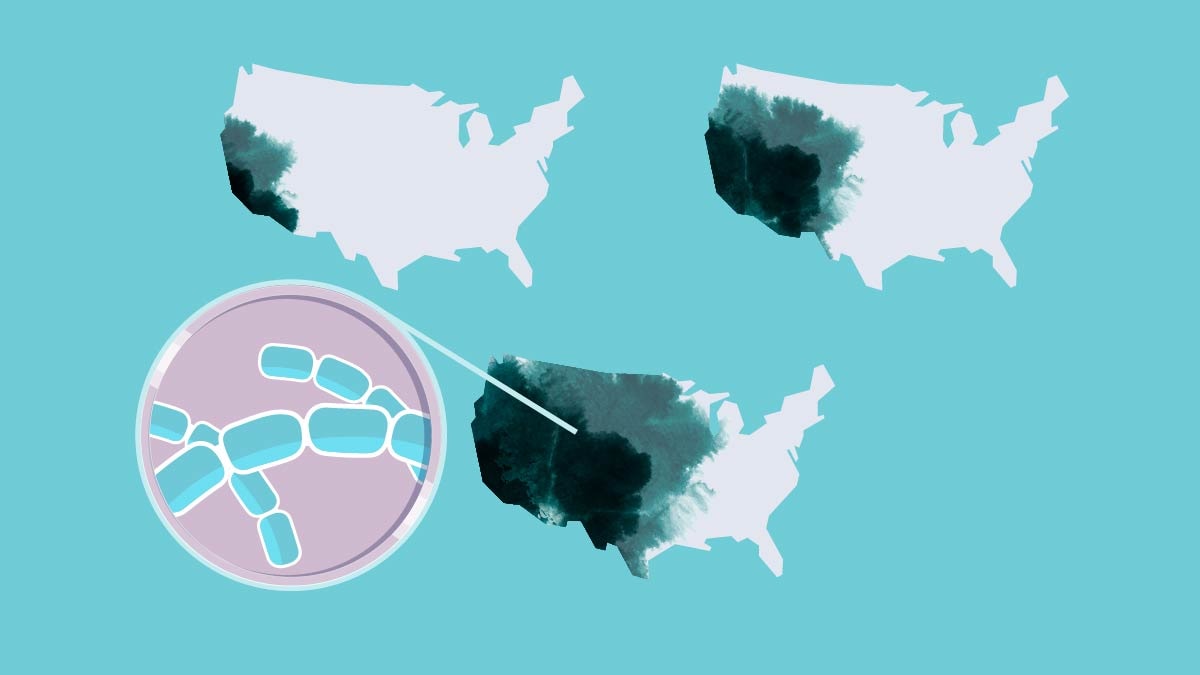Key points
- A One Health approach recognizes that the health of people, animals, and the environment are connected.
- Fungal diseases spread between people and animals and through the environment.
- Increasing antifungal resistance and the impacts of climate change on fungal diseases are two main fungal One Health issues.

Overview
A One Health approach recognizes that the health of people is closely connected to animal health and our shared environment.
One Health helps explain and address how fungal diseases emerge and spread. Fungi that cause human diseases live in the environment and are impacted by climate changes. Some fungal diseases can spread between animals and people.

Human, animal, and environmental connections
The way fungi interact with people, animals, and the environment impacts the spread and scope of fungal diseases.
Diseases affecting people and animals
Some fungal diseases, such as ringworm, are zoonotic, meaning that the disease can spread from animals and people.
Other fungal diseases, like histoplasmosis, can cause sickness in both people and animals. However, histoplasmosis spreads from the environment. It does not spread between people and animals.
Environmental impacts
Extreme weather events can increase risks for fungal infections. Flooding can increase mold growth and exposure. High winds can carry more disease-causing fungi into the air.
Climate change and warming temperatures may expand the areas where fungi like Coccidioidomycoses can live and cause disease. Fungi may adapt to environmental changes in other ways that impact how they cause and spread diseases.

Emerging One Health issues
The interconnections between people, animals, and the environment can result in new challenges to human health.
Zoonotic fungal diseases
Sporotrichosis
Emerging zoonotic disease-causing fungi are becoming more common. Sporotrichosis, caused by Sporothrix brasiliensis, can spread among cats and from cats to humans. This disease is rapidly expanding to new regions in South America
Ringworm
A severe form of antifungal-resistant ringworm, caused by Trichophyton (T.) indotineae, has been spreading among people in South Asia. There have been some infections among people in the United States. Recently, T. indotineae infections were detected in animals in the Indian subcontinent.
While no animal T. indotineae infections have been reported in the United States, health officials remain vigilant. Common types of ringworm spread easily between people and pets.
Antifungal resistance and the environment
Any use of antifungals in people, animals, or the environment, contributes to antifungal resistance. Fungicides are important for protecting plants from fungi and are used in agriculture and industry.
However, some fungicides work the same way to kill fungi as antifungal medications. Overtime fungi that are exposed to the fungicide can develop resistance to the similar antifungal. For example, azole fungicide use in industry may be contributing to azole-resistant aspergillosis.

Climate change impacts
Because of climate change, the environments where disease-causing fungi might live are expanding. In the United States, some environmental fungal diseases may become more common because of climate change. Examples include blastomycosis, Valley Fever, histoplasmosis, and Cryptococcus gattii infection.
Climate change is increasing the frequency, intensity, and duration of extreme weather events, such as drought, hurricanes, tornadoes, and wildfires. These events can encourage the production and spread of fungal spores that cause disease.
Severe weather events also increase the risk of injuries with fungal infections. Increased spread of fungal spores can infect cuts and lesions caused by debris.
Other exposures
Fungi can impact human and animal health in other ways. Toxins produced by fungi associated with agriculture can affect human and animal health when consumed. Contamination of food crops with aflatoxins, produced by Aspergillus, has led to pet aflatoxin poisonings and pet food recalls.
Aflatoxins can also cause sickness in humans. Eating poisonous mushrooms can serious illness and death in humans and animals.
